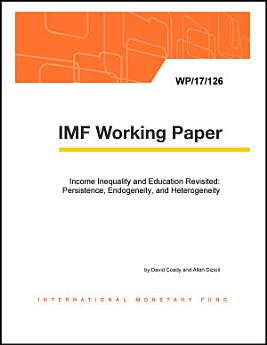Income Inequality and Education Revisited: Persistence, Endogeneity, and Heterogeneity
พ.ค. 2017 · International Monetary Fund
eBook
23
หน้า
reportคะแนนและรีวิวไม่ได้รับการตรวจสอบยืนยัน ดูข้อมูลเพิ่มเติม
เกี่ยวกับ eBook เล่มนี้
This paper presents new results on the relationship between education expansion and income inequality. While human capital theory suggests that income inequality increases with inequality of education outcomes, the expected relationship between income inequality and the level of education is ambiguous. Consistent with these theoretical priors, when dynamic panel estimation techniques are used to address issues of persistence and endogeneity we find a large, positive, statistically significant and stable relationship between education inequality and income inequality, especially in emerging and developing economies and among older age cohorts. The relationship between income inequality and education levels is positive but small and not always statistically significant, but we find a statistically significant negative relationship with schooling levels of younger cohorts. Statistical tests indicate that our dynamic estimators are consistent and that our identifying instruments are valid. Policy simulations suggest that education expansion will continue to be inequality reducing but that this role will diminish as countries develop.
ให้คะแนน eBook นี้
แสดงความเห็นของคุณให้เรารับรู้
ข้อมูลในการอ่าน
สมาร์ทโฟนและแท็บเล็ต
ติดตั้งแอป Google Play Books สำหรับ Android และ iPad/iPhone แอปจะซิงค์โดยอัตโนมัติกับบัญชีของคุณ และช่วยให้คุณอ่านแบบออนไลน์หรือออฟไลน์ได้ทุกที่
แล็ปท็อปและคอมพิวเตอร์
คุณฟังหนังสือเสียงที่ซื้อจาก Google Play โดยใช้เว็บเบราว์เซอร์ในคอมพิวเตอร์ได้
eReader และอุปกรณ์อื่นๆ
หากต้องการอ่านบนอุปกรณ์ e-ink เช่น Kobo eReader คุณจะต้องดาวน์โหลดและโอนไฟล์ไปยังอุปกรณ์ของคุณ โปรดทำตามวิธีการอย่างละเอียดในศูนย์ช่วยเหลือเพื่อโอนไฟล์ไปยัง eReader ที่รองรับ






